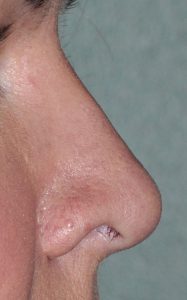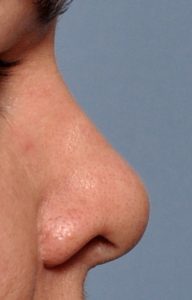
In September 2021 issue of the journal Plastic and Reconstructive Surgery an article as published on this topic entitled ‘Differences between Primary and Revision Rhinoplasty: Indications, Techniques, Grafts and Outcomes’. In this paper the authors review their experience in almost 250 patients who had either primary (153) or revisional (92) rhinoplasty surgery. It is this experience that allowed the authors to provide their experience the differences between these two types of rhinoplasty in regards to surgical techniques and outcomes.
Their most relevant finding was that the need for additional surgery was greater in the revisional group (24%) than that of the primary group. (11%) Most patients in either group sought additional surgery for aesthetic reasons but there was a higher incidence of combined aesthetic and functional reasons in the revisional group. To no surprise more complex methods of reconstructions/grafting were used in the revisional group.
The most common risk in rhinoplasty surgery is the need for a revision for any number of aesthetic and functional reasons. This number is often quoted in the 15% to 20% range, which is a very general number which can be affected by the original nasal deformity and the type of rhinoplasty used to treat it. But the number does serve to bring the patient’s attention to the very real risk and not uncommon need for some type of secondary ‘touch-up’ in rhinoplasty surgery in general.
What is not as well appreciated is the outcomes of revisional rhinoplasty and the potential need for even a third surgery. Most patients understandably assume that the secondary touchup will bring the rhinoplasty across the finish line and their final ideal result will be achieved. While this may be true for many secondary rhinoplasty patients it is not true for all. A revisional rhinoplasty is often made more difficult and unpredictable by the scar tissue from the original surgery, the loss of anatomically convenient cartilage harvest sites (septum) and the need to provide framework straightening and strengthening to resist scar tissue contracture. This paper brings attention to this issue and explains how a minority of rhinoplasty patients can end up having a third, fourth and even fifth surgery to try and maximize their result..
Dr. Barry Eppley
Indianapolis, Indiana



